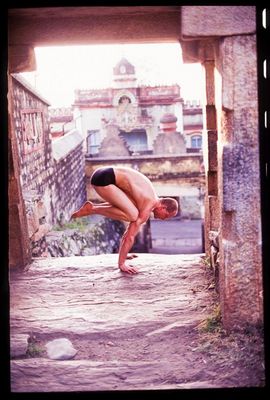
Philosophical background: the Rishis's experiences
An Indian legend tells us that, thousands of years ago, some people managed to get behind the external appearance of our physical world. These Rishis, a term that literally translates into "seers", experienced an eternal, divine truth. Inspired by this new perspective on the world which changed everything, they searched for ways to share their experiences with other people. However, the essence is beyond the intellect and therefore cannot be described with words. The Rishis began to pass on the rhythms of the world condensed into chants to a new generation of people. In this way, the roots of the yoga tradition began to form. Over time, some rhythms and chants turned into the texts of the Vedas, but many others have never been laid down in writing. They were exclusively passed on orally from generation to generation – as was the mystical experience of yoga. Some rhythms and chants did not even use language since the real experience cannot be expressed with words. Those who immerge themselves in the practice of Ashtanga Yoga become part of this vivid tradition. The dynamic practice of Ashtanga Yoga is a chant expressed by body and breaths which mirrors the rhythm of the world. By way of continuous practice, the key to this immediate experience is passed on. Over time, thousands of yogis have experienced the wisdom behind this dance of the breath with the body.
We are in an Ashtanga Yoga class. The traditional teaching form is called Mysore Style. It is named after the town of Mysore, located in the South of India. From here, Ashtanga Yoga spread all over the world. Mysore Style means that each participant practices within the framework of the Ashtanga Yoga system but, depending on personal abilities and needs, adapts it accordingly. To do so, the student is individually taught exercise by exercise by their teacher. In the very first classes, students are shown only a short series of motions, which they afterwards repeat until they are more and more familiar with them. Over the course of time, the teacher assists students in recognizing certain details; others will become obvious during the practice. When the student is ready, the teacher extends the practice series by adding new movements to those already known. Thus, step by step, a comprehensive and more complex yoga practice develops. In this way, the practitioner can gradually develop a deeper and deeper understanding of Ashtanga Yoga.
Historical development: the convoluted paths of a vivid tradition
The European Fitness Movement
Basically, yoga is inseparably connected to the Fitness Movement which started in Europe at the end of the 19th century and promoted the ideals of a healthy body and mind. At this time, physical training became part of holistic personal development in Europe. Within the framework of this movement, several types of gymnastics developed as well as sports associations and a veritable fitness cult. Starting in England, organizations such as the YMCA and the CVJM began to spread the "new" conception of the human being, especially that of the physical body until it finally also reached the colonies. In India, there were soon first attempts not only to emulate the West but to counter developments there with an authentic Indian type of gymnastics. The time was right for a holistic Indian practice system affirming the body which was both spiritually and physically oriented.
The lost tradition of Hatha Yoga
This development was reason enough for Krishnamacharya to search for the lost line of tradition in India. As early as in the 6th century, a spiritual practice system which also integrated the body began to form in India. It was based on tantric philosophy and soon known under the name Hatha Yoga. From the Indian Middle Ages onwards, though, this practiced was mostly subdued. The Hindus considered Hatha Yoga too affirmative of the body, for the Christian it was too Hindu and for the English too Indian. In India, the tradition was therefore considered lost. It is said that only nine masters practiced and taught in it before it fell into oblivion without any students.
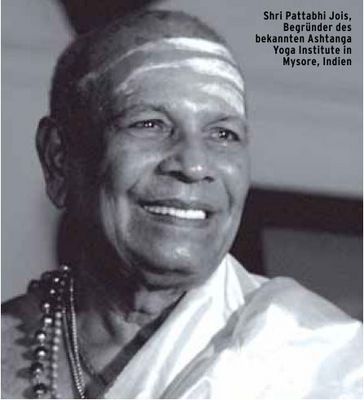
Tibetan lines of tradition
However, in Tibet, we find proof of a continuation of the line of tradition dating back to approximately the 8th century. The texts of this Tibetan yoga complement the mostly static Indian exercises – motion, breath and concentration are combined to form a comprehensive practice.
At the foot of Mt. Kailash
For Krishnamacharya, it was therefore a matter of course to go to the Himalaya to search for the vivid tradition of a practice system which also integrated the physical body. It is said that, in 1916, he spent three months erring through the mountains until, at the foot of Mt. Kailash in Tibet, he found his teacher Ramamohan Brahmachari and spent the following seven and a half years with him in order to learn more and to thus become part of an ancient but still vivid tradition. During these years, Krishnamacharya learned the dynamic practice series, strictly guarded techniques and profound philosophy from his teacher.
Mysore from 1924 onwards
Having returned from the solitude of the mountains, Krishnamacharya lived in Mysore from 1924 onwards. It is there that the began to pass on the dynamic practice system we today know under the name Ashtanga Yoga. Pattabhi Jois and B. N. S. Iyengar are among the students who spent years with him. When Krishnamacharya left Mysore in 1955 Mysore, both stayed in the city and continued both his teaching and the tradition. Ultimately, their students in turn brought Ashtanga Yoga to the West.
Ashtanga Yoga goes West
In 1964, the Belgian André van Lysebeth was the first Westerner to find his way to Pattabhi Jois’ small yoga school in Mysore. It took only ten more years for further students from Europe and America to follow to learn Ashtanga Yoga from Pattabhi Jois and B. N. S. Iyengar. This was the starting point for the era of dynamic yoga in the West. Ashtanga Yoga was passed on, practiced, experienced. The raw form from India was complemented by details and became more sophisticated. Techniques for adjustments and anatomical alignment were perfected. Different teacher set different foci within the practice system. Multi-layered and opalescent, like a multi-dimensional web, Ashtanga Yoga today spans the entire globe and connects yogis from all over the world with each other.
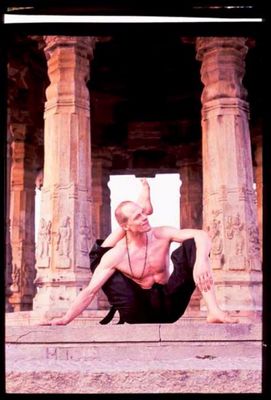
Maybe, Ashtanga Yoga is like yoghurt ferment. If a little ferment is added to the milk, the bacteria in the milk will turn it into yoghurt. No matter in which country the ferment is added to the milk, the outcome will always be the same. Still, the yoghurt will always taste a little different. The ferment stays the same, but the milk changes. Likewise, Ashtanga Yoga also always has a slightly different flavor, but in the end, it stays Ashtanga Yoga. Anybody who has once mastered the dynamic practice system can practice in Ashtanga Yoga schools all over the world. This is a beautiful experience and almost feels a bit like being at home all over the world. At the same time, you will always notice slight differences which might provide valuable clues for your own practice. This universality of Ashtanga Yoga, combined with individual characteristics of teachers and students, is part of its magic charm.
Today, Ashtanga Yoga is one of the most widely known and most widely practiced yoga traditions in the world. Next to the traditional practice form, a large number of variations and new lines developed in the West. These spin-offs of Ashtanga Yoga are known under names such as Vinyasa Yoga, Power Yoga, Jivamukti Yoga or Dynamic Yoga.
Patanjali Yoga
If we search for the philosophical foundations of Ashtanga Yoga, there is now we around Patanjali's Yoga Sutra: "This is Patanjali Yoga“, my teacher Pattabhi Jois used to say. Just as Pattabhi Jois, experienced teachers of the tradition again and again refer to Patanjali's Yoga Sutra. The physical practice of Ashtanga Yoga is here understood as a commentary on the philosophy laid out in the text. Only in combination with it is a direct access, based on individual experience, to this seemingly abstract philosophical concepts possible. For each single line in the Sutra, there is an equivalent in practice.
The name Ashtanga Yoga refers to the eight-fold path described by Patanjali. Its first two limbs require practical realization in our daily life, whereas the last two develop spontaneously on the basis of the preceding ones. For this, however, we need practice on the yoga mat first - the four limbs in the middle. Ashtanga Yoga links those four limbs to a single practice. The aim is to create harmony in the physical (Asana), energetic (Pranayama), emotional (Pratyahara) and mental (Dharana) aspects of our being as a human.
The central techniques of Ashtanga Yoga
In the West, the possibly most well-known aspect of yoga practice are the physical exercises and position which create harmony in the physical body. In the Ashtanga Yoga practice system, a large number of positions (asanas) are grouped into six practice series which progressively become more difficult.
Ujjayi:
The audible, rustling breath is surely one of the most striking aspects of Ashtanga Yoga. The breath defines the rhythm for the movements and also serves as a help to stay focused. Breath and thoughts are linked. When the breath is brought into a calm, steady rhythm, our thoughts likewise become calmer.
Kumbhaka:
Once the steady flow of breath has been established, advanced practitioners deliberately interrupt this rhythm in some positions and seating exercises.They hold their breath to guide the subtle energy (prana) through the body.
Vinyasa:
In Ashtanga Yoga, the characteristic dynamics develop when breath and movement come together. This is the basis for a meditation in motion because it helps us to keep our focus in the moment. Even though each movement follows other paths and rules, the steady breath always forms the underlying basis, which strives towards balance both as far as speed and intensity are concerned.
Bandha:
Etymologically speaking, the German word "Band" (ribbon, tie), is connected with the term bandha. Just like a ribbon, the techniques of bandha guide the energy through the energetic body. This mainly happens by way of concentration and power of imagination. Subtle muscle contractions, the physical effect of bandha, facilitate concentration and form the basis for the correct alignment of the body in different positions.
Drishti:
Focus and concentration points complete the techniques of Ashtanga Yoga. All sensory organs are closed off from the external world – far away from all distractions, one starts to move in a state of focus and unity.
From the mat into life
Trained bodies, exhausting positions and acrobatic movement sequences – with this description, Ashtanga Yoga is often reduced to the merely physical. This is only the surface, though; what is often overlooked is the fact that the physical practice only serves as a practice field to experience a kind of wisdom that will ultimately permeate our entire life. Life permanently confronts us with new tasks and challenges. For us, this means constantly having to find the right measure and to retain our inner harmony. If our practice on the mat is too easy, this will, in everyday life, have the result that we're not prepared for certain tasks. It is only the intensive, challenging practice which can serve as a practice field for those demands. At the same time, however, there's no need to worry: Ashtanga Yoga always offers new positions and movements in which it becomes difficult to find inner balance. The practice series are designed in a way to lead as to the point of the seemingly impossible where we experience our physical limits – it is here that work on our yoga path begins. The possibilities of finding new challenges are virtually unlimited: "Everybody can practice yoga – as long as they can breath“, as Krishnamacharya put it. An experienced teacher will put together the perfect, tailor-made practice for each student from the six traditional practice series, irrespective of whether they are old, young, athletic, less athletic, healthy or suffering from physical restrictions.
Dr. Ronald Steiner is a sports physician and teaches yoga nationwide in Germany. He teaches in the tradition of Ashtanga Yoga and is among the few yoga teachers authorized by both Pattabhi Jois and B. N. S..
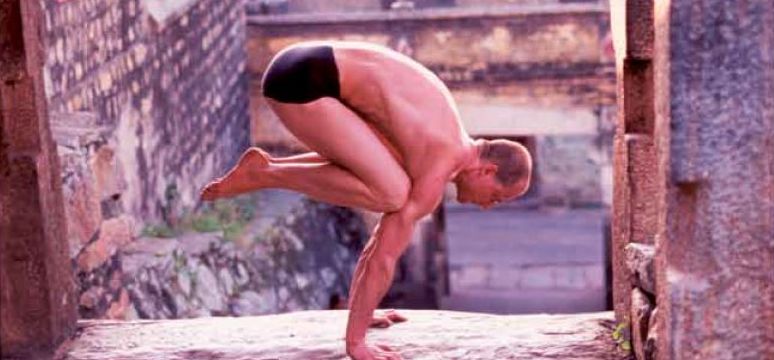

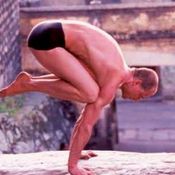
 Dr. Ronald Steiner
Dr. Ronald Steiner
